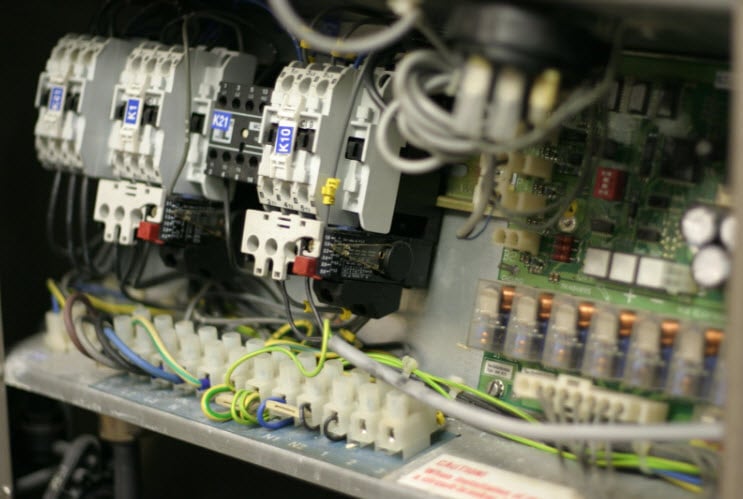Mastering the Basics: Fundamental Skills for Handling Fuses and Motors
If you have an interest in working with cars, robotics, HVAC systems, or anything in between, it’s important to possess a fundamental knowledge about the components that make these systems possible. While electrical devices of all types contain components of varying levels of importance, two stand out – the fuse and the motor.
Though they may differ widely in terms of their size and complexity, both the fuse and the motor are integral to the operation of electrical systems and equipment. In this article, we’ll explore some of the crucial information pertaining to fuses and motors that you’ll need to know before embarking on your career as an automation technician.
What is a Fuse, How Does it Work, and What Does it Do?
Think of a fuse as a sort of gatekeeper whose purpose is to protect delicate electrical systems against large and potentially dangerous surges in power and/or temperature. This gatekeeper, however, isn’t all powerful; instead, its ability to protect is intrinsically tied to its ability to fail. That’s because when a fuse is subjected to extreme conditions, it will either burn out or blow, thereby protecting the rest of the system from damage. Once blown, the fuse has served its purpose and must be replaced.
Fuses, according to the National Electrical Code and others like it around the globe, are classified as an overcurrent protective device (OCPD), a distinction it shares with the circuit breaker (even though they are quite different in their composition and function).
A fuse will always comprise a fusible element, which is contained within a small glass body. The purpose of this encased material is to melt and separate when it is exposed to more energy than it is designed to withstand. Once severed, the circuit is effectively broken, and no harm will come to the rest of the system. There are two main reasons why a fuse will blow: the overload and the short circuit.
When a circuit is closed, it is working properly. Current travels through the system powering various electrical components. An overload occurs when the current spikes, resulting in upwards of six times the normal current, which in turn results in the eventual and sudden “opening” of the current.
A short circuit is the result of the current having found a path that offers less resistance than the intended route. Electricity will happily travel along the various copper wires that connect the power source to the system’s outputs. However, if a system’s insulating materials degrade or an applied external force creates a new pathway that facilitates the travel of electricity, it will follow that path instead. The resulting spike in current level far exceeds that produced during an overload (approximately 1,000 times normal levels). As such, potential damage to the system is also far greater.
What is an Electric Motor, How Does it Work, and What Does it Do?
For most people, the extent of their knowledge involving electric motors will begin and start with their EV, lawn mower, fans, appliances, or in some cases, snow blower. Most people will also be able to infer that an electric motor transforms electricity into mechanical, forward moving power. What they may not know is that these types of motors are governed by the principles of electromagnetism, whereby force is generated when an electrical current is present in a magnetic field. Subsequently, this force generates torque on a wired loop within the magnetic field, which of course causes the motor to turn and perform the intended action. Electric motors can be powered by alternating current (AC) or direct current (DC), each of which is described below.
A bit about AC-powered motors
In an alternating current motor, the stator – which is comprised of electromagnets positioned around the outside – produces a rotating magnetic field when power is applied. Within the stator, you’ll find a metal axle, looped wire, and a coil that make up the rotor. As the external magnetic field rotates, so too does the rotor. The rotor, courtesy of the magnetic field becomes an electrical conductor, and an electrical current is induced within the rotor.
A bit about DC-powered motors
When direct current is applied to the coils of DC motors, magnetic forces are produced, which attract and repel the magnets on the rotor. This constant push-pull causes the rotor to rotate. The use of a commutator, which reverses the current through the stator, ensures the rotor continues to spin as long as current is applied to the motor.
When Things Go Awry: Basic Troubleshooting Techniques
When it comes to fuses, you can test if a fuse is good or blown visually or by checking it with a testing device such as an ohmmeter or a continuity tester.
When performing a visual test, you may notice that the little glass window on a blown screw-in fuse will appear cloudy, brown, or burnt. These visual cues are produced when the fusing element has melted. The condition of the glass window is not a universally accurate method for visually spotting a blown fuse. If the window is clear, you may still want to visually inspect the fusing element to ensure it has not severed.
Fortunately, handheld testing devices like continuity testers and ohmmeters are relatively inexpensive ways to check for electrical resistance. Depending on the type of fuse, there are different ways to use these devices. For example, when testing a screw-in fuse, take one test lead and touch it to the threaded side of the fuse and the other to the end of the fuse. Alternately, for cartridge fuses, you’ll want to touch each test lead to opposing ends of the fuse.
Of course, troubleshooting electric motors is much more involved, though you may notice a common theme. The following is a list of some troubleshooting techniques.
Failure to turnover/start – When an electric motor fails to turnover or start, you’ll want to spend a couple moments visually inspecting the motor and ensure the load is turning freely. If the motor is not turning over upon its first use, the issue could be a faulty wired connection. If those initial checks yield no results, consider using a voltmeter to test the motor circuit to ensure adequate voltage is available at the motor terminals. Keep in mind that things like faulty switches, poor connections, and compromised relays can each result in an increased resistance which in turn will cause a commensurate drop in voltage when electricity is applied to the motor.
If you’ve determined the motor’s voltage is low or negligible, review the overload protectors to ensure they haven’t been tripped. When all else has failed, the next step will be to begin disassembling the motor to get a more in-depth view of the various components. Some issues, such as stator winding damage, are best left to the manufacturer to replace.
Sudden stoppage – There is nothing more frustrating than a seemingly optimally performing motor that fails without any indication. In electric motors, this will likely occur when a safety protection device such as a fuse or overload has been tripped. Remember that overloads can happen seemingly at random and don’t always trip the safety devices installed to protect the rest of the system. An unchecked overload could result in spikes of current causing significant damage to the motor.
How to Safely Work with Fuses
Even though the purpose of a fuse is to prevent harmful current from damaging a compromised electrical system, due care should nonetheless be used when working with them. For example, if you need to replace a fuse, make sure that the system’s power supply is turned off and the circuit discharged before you begin working to prevent injury. Make sure you have a proper replacement fuse type on hand – replacing a fuse with another fuse type could result in electrocution or could even cause a fire. When replacing a fuse, its always a good idea to remove any corrosion that may have built up over time.
How to Safely Work with Motors
Occasionally you may need to analyze your electric motors and make some necessary repairs. Of course, any time you’re working with electricity and/or mechanical devices, you need to abide by some basic safety precautions so you can avoid hurting yourself or others.
Motors are complicated devices and as such, you will need to ensure that your work environment is prepared before you begin working. This means tidying and removing any and all clutter and debris that could pose a trip hazard in and around the motor. Properly rated safety equipment should be worn at all times, including protective eyewear and safety gloves. Take stock of the position of any necessary emergency stop controls or motor safety disconnects in the area.
While testing or maintaining the motor, be aware that some surfaces can become hot to the touch, and that some motors are located adjacent to quickly moving, heavy, or articulated parts. Locking out/tagging out equipment in the motor’s vicinity is a best practice for keeping the work environment safe.
While experience can be leveraged to create safety, there is no substitute for mindfulness and continuous learning. Revisiting your employer’s safety standards as well as industry best practices will keep you and your co-workers safe.
Mastery Takes Commitment
Mastering any topic, even one generally accepted as fundamental, still takes time and effort. Proper handling and maintenance of electrical devices and components is no exception, even in the case of a lowly fuse. Now more than ever there is a growing need for those with the knowledge and skill to work on the various electrical systems that power our world.
If you’d like to learn more about working with electrical systems including digital electronics, industrial automation, and/or robotics, consider enrolling in the Automation Technician program at George Brown College.
Comments
Sean, you can enrol online…
Submitted by Anonymous (not verified) on Mon, 12/09/2024 - 11:35
Sean, you can enrol online at https://www.automationprogram.com/register-program?reset=1 or you can contact a Program Consultant toll-free at 1-888-553-5333.

What can I do to enroll?